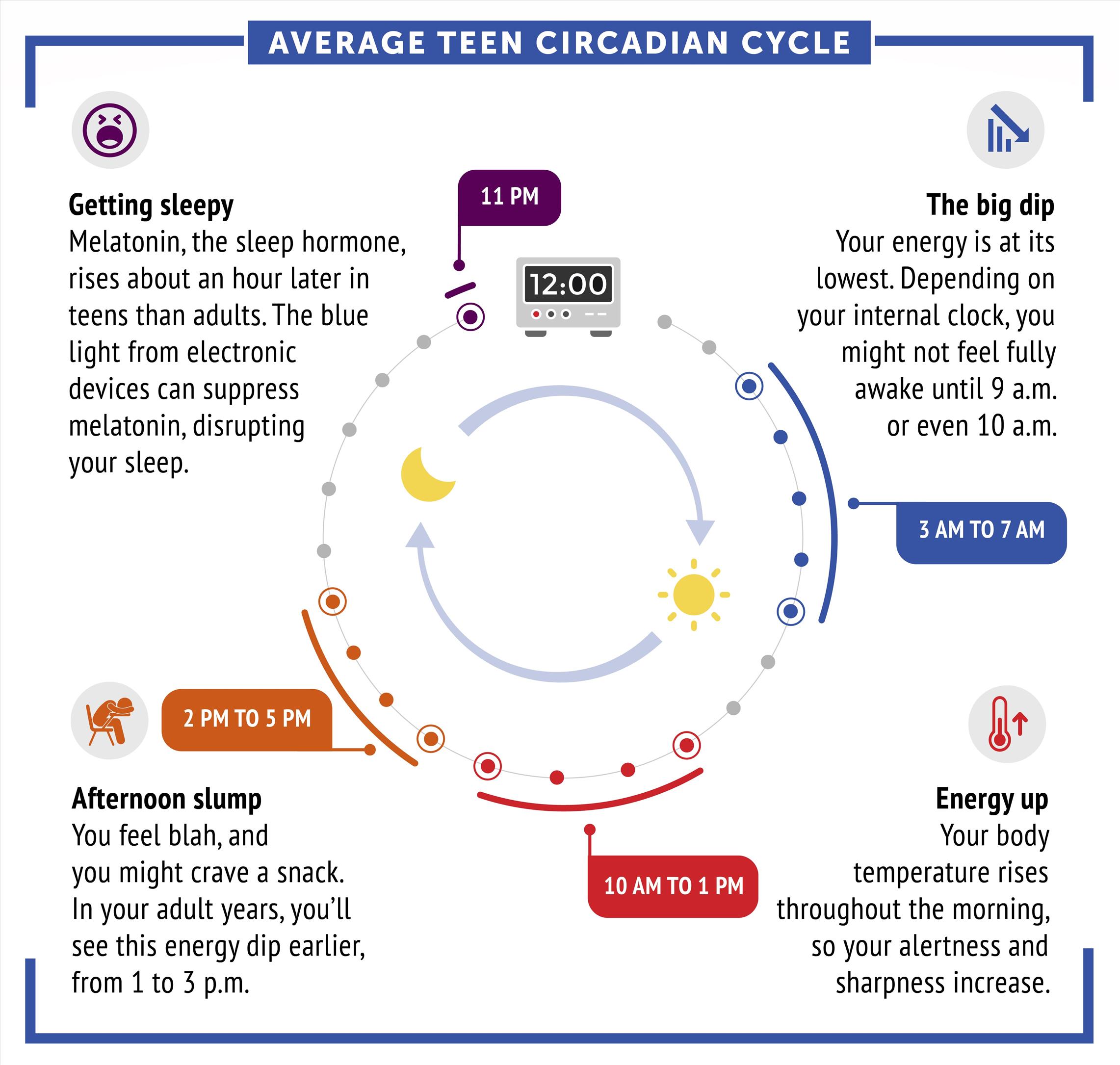Circadian Rhythms
What Are Circadian Rhythms?
Circadian rhythms include some of the physical, mental, and behavioral changes an organism experiences over a 24-hour cycle. Light and dark have the biggest influence on circadian rhythms, but food intake, stress, physical activity, social environment, and temperature also affect them. Most living things have circadian rhythms, including animals, plants, and microorganisms. In humans, nearly every tissue and organ has its own circadian rhythm, and collectively they are tuned to the daily cycle of day and night.
Circadian rhythms influence important functions in the human body, such as:
- Sleep patterns
- Hormone release
- Appetite and digestion
- Temperature
What Scientists Know About How Circadian Rhythms Are Controlled
The system that regulates an organism’s innate sense of time and controls circadian rhythms is called a biological clock. It’s composed of proteins encoded by thousands of genes that switch on and off in a specific order. A master clock coordinates all the biological clocks in an organism.
In vertebrate animals, including humans, the master clock exists in the brain. The human master clock is a large group of nerve cells that form a structure called the suprachiasmatic nucleus (SCN). Among other functions, the SCN controls production of the hormone melatonin based on the amount of light the eyes receive. In the evening, a person’s master clock tells their brain to make more melatonin, causing sleepiness. The SCN also synchronizes the circadian rhythms in different organs and tissues across the body.
In 2017, NIGMS-funded researchers Jeffrey C. Hall, Michael Rosbash, and Michael W. Young won the Nobel Prize for their circadian rhythms research. They identified a protein in fruit flies that has a role in controlling normal daily biological rhythms. During the daytime, this protein (called PER) is produced by the cell but immediately broken down in the cytoplasm, keeping PER protein levels low. When night falls, a protein called TIM binds directly to PER, protecting it from breaking down. The PER-TIM complexes enter the nucleus and stop the cell from making additional PER. Then, as day breaks, the PER-TIM complexes break down, the block on PER transcription is lifted, and the cycle repeats.
In this way, PER regulates its own synthesis through a negative feedback loop. Feedback loops are coordinated systems that link the output of the system to its input. For example, a thermostat functions on a feedback loop: A home’s furnace will turn off when the house reaches the set temperature and only turn back on when the temperature falls below that threshold again. In the case of PER, the protein directly controls the transcription of the gene that codes for it.
Health Effects of Disrupted Circadian Rhythms
Circadian rhythms can fall out of sync with the outside world due to factors in the human body or environment. For example:
- Variants of certain genes can affect the proteins that control biological clocks.
- Neurological diseases, such as Alzheimer’s disease, can disrupt circadian rhythms, causing poor sleep quality and changes in symptoms from day to night.
- Travel between time zones (jet lag) and shift work alters the normal sleep-wake cycle.
- Light from electronic devices at night can confuse biological clocks.
Drowsiness, poor coordination, and difficulty with learning and focus may occur when circadian rhythms fall out of sync short term. Long-term sleep loss and continually shifting circadian rhythms can increase the risks of obesity, diabetes, mood disorders, heart and blood pressure problems, and cancer, and can also worsen existing health issues.

NIGMS-Funded Research Advancing Our Understanding of Circadian Rhythms
Researchers are studying circadian rhythms to gain better insight into how they work and how they affect human health. Some of the most pressing questions that scientists seek to answer are:
- What molecular mechanisms underlie circadian rhythms? Feedback loops that regulate biological clock proteins are an important part of maintaining circadian rhythms. Basic science research aims to identify more of the proteins and pathways involved in keeping time over 24-hour cycles, responding to external cues such as light and food intake, and synchronizing circadian rhythms throughout the body.
- Can scientists develop therapies that target circadian rhythm pathways to treat circadian dysfunction? Disruptions in circadian rhythms happen in shift workers, travelers, and patients with autism spectrum disorder, Alzheimer’s disease, and Parkinson’s disease, among other conditions. Scientists are looking for therapies that may affect circadian rhythm pathways and help relieve the symptoms of circadian dysfunction.
- What genetic variants lead to circadian rhythm dysfunction? Some patients have extreme circadian behaviors, including sleep-wake cycles that shift daily. Genetic screens for variants of genes known to be associated with the biological clock can help explain these patients’ symptoms. These screens may also identify genes previously unknown to be associated with the biological clock.
Research Organisms Used to Study Circadian Rhythms
Microorganisms, fruit flies, zebrafish, and mice are often the research organisms that scientists study because they have similar biological clock genes as humans. For example, the cyanobacterium Synechococcus elongatus has a fully functional circadian rhythm. Using techniques including CRISPR genome editing, researchers remove clock genes from cells of this cyanobacterium species to shed light on the function of individual proteins. Similar experiments in fruit flies advance the study of the molecular mechanisms underlying circadian rhythms and their effects on behavior. Scientists control their research organism’s environment by altering light and dark periods. They then look for changes in gene activity, molecular signals, or behavior caused by the changes in light and dark.

Content reviewed September 2023
NIGMS is a part of the National Institutes of Health that supports basic research to increase our understanding of biological processes and lay the foundation for advances in disease diagnosis, treatment, and prevention. For more information on the Institute’s research and training programs, visit https://www.nigms.nih.gov.
